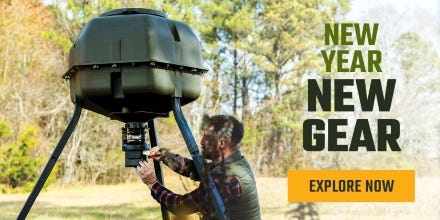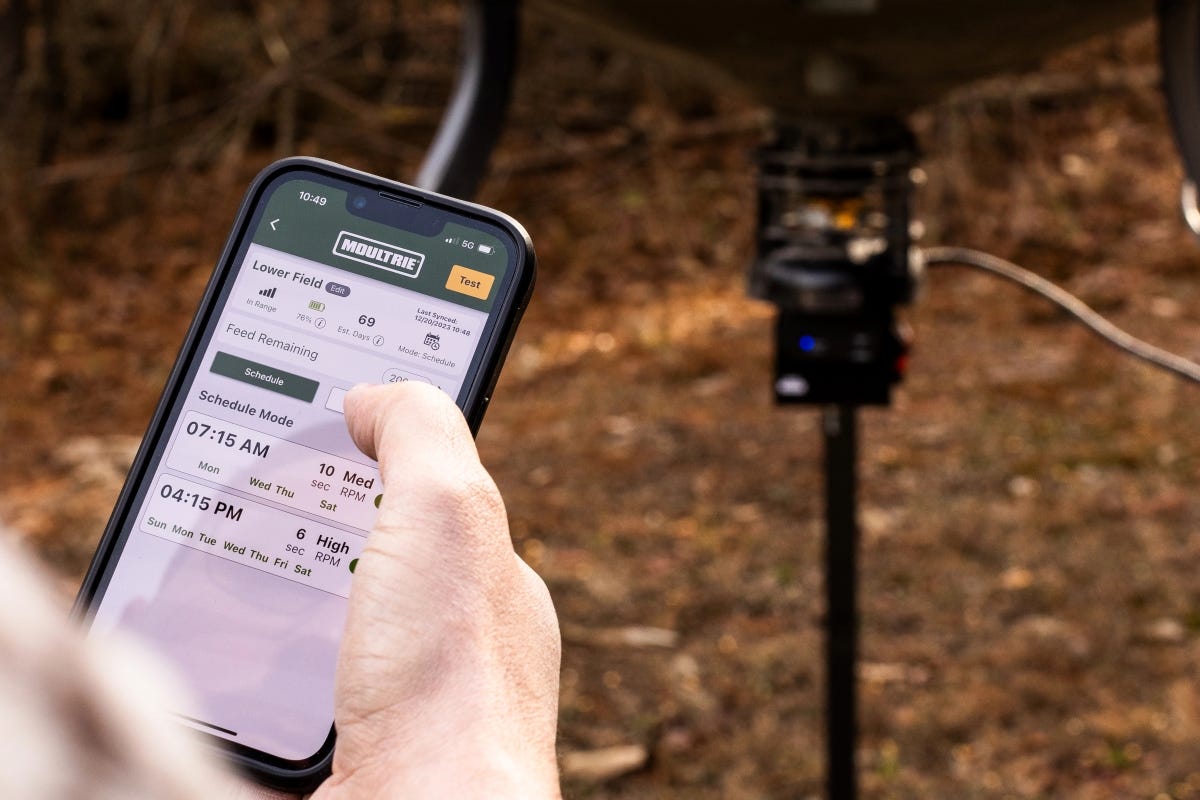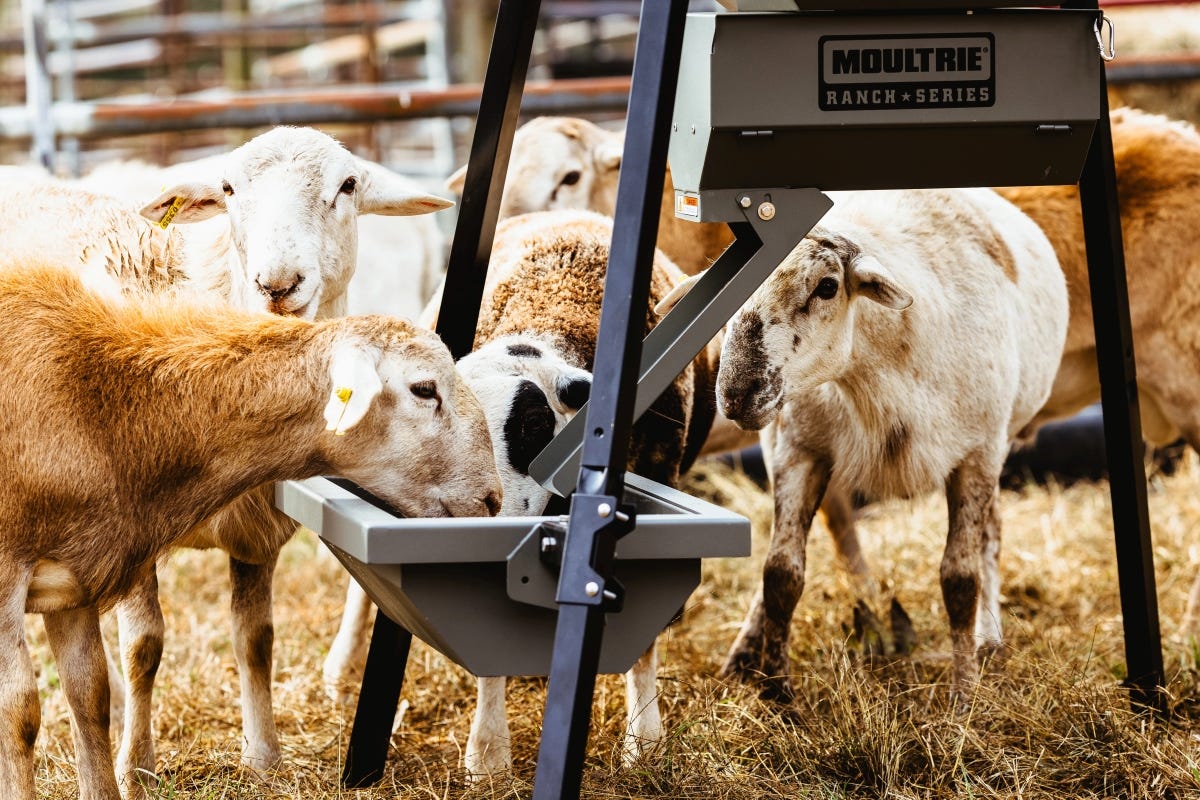- Oct 3, 2014
18 Ways to Get More Out of Your Game Camera
Game cameras are one of the most important tool in any game manager's arsenal, if used and maintained properly. Read up on these tips that will help you get the most out of your game camera this season, and seasons to come.
Keep Your Camera’s Firmware Updated
This is an often-overlooked step that can save you a lot of frustration. Moultrie cameras contain software which runs the device, often referred to as firmware. Moultrie Firmware updates help to ensure that you get the most out of your game camera and game camera digital accessories. By fixing known bugs or software problems, firmware updates keep your camera working as it was intended to.
To see if your Moultrie game camera has any available firmware updates, visit the Moultrie Resources section and search for your camera model.
If your specific camera model has an available firmware update, download it and apply it to all of your cameras from that model. It is vitally important to follow the firmware instructions to the letter. If your camera loses power during the update, or you stop the update prior to completion you risk permanently disabling the camera.
Bring Camera Hanging Tools
1. Trail camera manuals
There have been countless times I’ve been in the field and have forgotten how to program some function of a camera. Forgot yours, no problem download a new one.
2. Extra Batteries
Make sure to test each battery before heading to your hunting land. Many of the problems that people run into with their game cameras are caused by battery problems, don’t be like those people. For more information, read our recommendations for selecting batteries for your game camera.
3. Extra Empty memory cards
Make sure to erase and format your SD card at home. Certain file formats from some trail cameras are not compatible with other trail cameras. Also check to make sure every brand of card you own is compatible with every scouting camera you own. Not every SD card will work in every game camera, so make sure you have what you need before heading into the woods. Need help selecting an SD card for your game camera? read our SD article.
4. Digital multi-meter
My battery tester has become the most valuable piece of equipment for setting out trail cameras. Don’t settle for just a battery tester, buy a quality multi-meter, you’ll thank us later.
5. Something to view pictures
Whether it’s a laptop or one of the viewers made specifically for trail cameras, bring something with you to check the functionality of your scouting cameras. We would not suggest viewing all your pictures in the field, but you’ll appreciate the ability to verify your trail camera is working properly before you swap cards and leave it for another scouting session.
6. Folding saw/pruner
One of the most common reasons people capture excessive false positives on their game cameras is the presence of foliage in front of your camera. You’ll need to have the ability to remove any growth from the sensing area of your scouting camera to ensure you capture quality images.
7. Cover scent
It’s a good idea to minimize the impact of checking your cameras. Too much human scent in an area can deter animals from visiting, especially wary old bucks. Deer are used to raccoon scent year round, which is why we use it exclusively when checking cameras.
8. Keys for camera locks & cables
Locks aren’t much use without a key are they? Keeping them in a game camera maintenance kit is a great way to ensure that they’re there when you need them.
9. Lens wipes
Trail cameras get dirty out in the field. I’ve had many a curious deer, and even a bear sniff one of my scouting cameras with their muddy noses. Every picture after that was blurred. Also dirt on the detection lens will decrease the sensing ability of your trail camera. Clean your cameras every trip.
10. Desiccant packs
Changes in humidity and temperature at dawn/dusk hours often can cause condensation building up on the inside of the lens cover. This condensation produces blurred images and can last for hours. Moisture absorbing packs control the humidity inside your scouting camera case and help to prevent condensation.
Have a Plan
Spread out across the Moultrie test facilities we have hundreds of game cameras capturing hundreds of images with every passing hour. With such a great deal of cameras and images, the need to organize our camera inventory becomes magnified, but even if you don’t have a great deal of cameras it’s still important to keep your game camera plan organized.
Tagging the exact GPS coordinates of each camera will save you from misplacing a camera, but perhaps more importantly will keep you from wasting hours traipsing human scent through your intended hunting spot.
When placing game cameras, it’s important point your camera to the North. By pointing your camera North you avoid sun glare that can trigger your camera absent of game (referred to as “false triggers”). It can also prevent exposure “blow-out” in your images due to strong backlight. Take a GPS out with you when you hang your cams and it will save you a lot of false triggers and wasted photos.
When surveying a game trail, placing the camera at a 45° angle to the trail expands the field of view relative to the game trail which will increase your odds of capturing a photo of the animal. When cameras are set perpendicular to an established trail, the sensor will have measurably less time to capture an image before the animal has passed through the camera’s field of view. By placing the camera at an angle you greatly increase your chances of getting that perfect shot.
Many of Moultrie’s game camera’s come complete with camouflage, but It can also sometimes be helpful to leave some brush around your camera to help hide it from thieves. Be careful, however, not to overly obstruct the camera or it could have reduced LED illumination which would leave the subject underexposed or not exposed at all. To strike the perfect balance between the two it’s advisable to bring a pair of pruning shears to ensure that the camera’s field of view is unobstructed. All Moultrie game cameras have an aim/detection indicator which you can use to confirm you have the camera placed properly. Some Moultrie camera models also feature Live View, which is an on camera screen that allows you to view exactly what the camera is capturing to best position the camera.
Deter Thieves
There is nothing worse than buying a new trail camera, going through all the trouble of putting it out in the field, only to have it stolen by thieves. The first thing you must accept is that any camera is at risk of being stolen. If a thief has his mind set on stealing your camera, there’s not a whole lot you can do about it. With that being said, there are a lot of things you can do to minimize the opportunity for your cameras to be stolen.
- Don't hang your camera in an obvious location. A trail camera hanging on a logging road or next to a feeder is inviting trouble. When we hang our cameras we try to find a less conspicuous location that does not pop out visually.
- Consider hanging your cameras higher in trees. It may mean carrying around a little stool or short ladder but thieves rarely look for cams in trees and if they see them they would need a way to reach them. (Note that if you do this, make sure your field of view/image capture still works for your needs.)
- Security cables, and lock boxes work well to deter theft. All Moultrie cameras have a corresponding Moultrie custom-fit security box available.
- Security codes – while a security code won't necessarily deter theft, at least you’ll have the satisfaction of knowing the thief won't be using your camera. Also, if you’re concerned about theft, adding a small sticker to the cover or area that all game cameras are protected by a Moultrie security code can serve as a deterrent as well.
- Cover your tracks – Walking through fresh snow to check your game camera on public land is practically inviting thieves.
Keep Your Cameras Straight
To keep track of our cameras, and their corresponding SD cards, we number each camera and it’s corresponding cards in several different locations with a Sharpie marker. We also number the card for that camera. This type of numbering system allows us to have a series of two SD cards for each camera, allowing us the luxury of reviewing and downloading all our new images back to the testing facility while always keeping our cameras active in the field.
Another great option for managing your images is to consider is using one of the Moultrie’s picture and video viewers, which allow you to view and transfer images and videos from your cameras to a separate SD card right in the field.
Have a File Structure
With your trail cams in the woods, busily snapping photos, it’s now just a matter of collecting and organizing that data in a way that makes analyzing easy. If you haphazardly dump all of your camera images into one big file, you’ll be setting yourself up for frustration. A good practice is to organize your photos according to a file structure. Have a folder for each of your game cameras with sub-folders for location, and sub-folders within those location folders to help keep information like date of capture separate. This prep work will pay dividends when you’re tracking that big buck on your hit list.
A great way to ensure that images never are misplaced is to utilize the infostrip to imprint vital photo information on each exposure. Utilizing this feature to keep tabs on which camera captured which images is a great way of organizing your images, and ensuring that you have the current and correction information when patterning your game’s behavior. With that said, it’s very important that your date and time information is correct in your camera’s settings.
Have a Goal in Mind
When you set out cameras, have a goal in mind or a question that you aim to answer:
1. How much activity is this area getting?
Plot Stalker (or the Time Lapse option) makes surveying a large swath of land over a long period of time easy, and is a vital tool in answering this question for any piece of land.
2. Is this a travel route, and if so at what times, and in which direction are the animals traveling?
Video becomes an important tool at this stage. With a still image it’s more difficult to determine the general direction of travel, whereas with video it becomes more readily apparent.
3. Have a Hit List.
Keep tabs and stats on specific bucks, track their movements, and zero in on a pattern that will put you on top of his home turf come opening morning.
Post-Season Care
If you can leave your camera out to continue to collect images past hunting season, a post-season deer census conducted with trail cameras provides a great way to learn about the activity and behavior patterns of specific deer, and general health of the post-hunt deer heard. Where legal, supplemental feeding for post-season photo collecting is recommended. Moultrie offers a wide variety of Feeder options depending on your specific needs.
Storing your Cameras
Step 1: Complete an operational run-through check to ensure all modes, settings and features are properly working.
Step 2: Power off the camera and remove all batteries and the memory card before storing game cameras.
Step 3: Utilize a soft lens cloth and cotton q-tips to remove all moisture, dirt particles and other forms of debris that has accumulated from a season of heavy use.
Step 4: Place game camera units inside of an air-tight plastic bag to prevent exposure to moisture and alarming scent that can spook game animals such as whitetails.
Step 5: Store game cameras inside of a plastic container and utilize a protective buffer such as bubble-wrap to prevent direct rubbing, banging or friction between units that can cause damage.
Step 6: Avoid storing units for extended periods in areas that experience extreme temperature changes and exposure to condensation.






